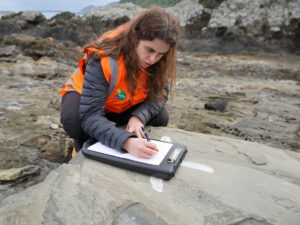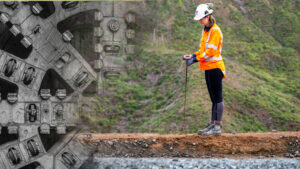Soil is an essential cornerstone of our planet, yet it often goes underappreciated. It serves as a foundation that sustains everything from thriving ecosystems to the food on our plates. This year’s World Soil Day theme, Caring for Our Soil, highlights the critical role of healthy soil in sustaining ecosystems and communities.
We asked our ecology and geotechnical experts from across Tonkin + Taylor about the importance of healthy soil, the consequences of degrading soil health, methods, and restoration of our soil.

The importance of healthy soil for our planet
Healthy soils are the basis of thriving ecosystems. Their vitality depends on the diverse community of organisms they host—known as soil biodiversity—which includes bacteria, fungi, insects, earthworms, and plant roots.
Soils’ physical and chemical properties, such as pH, organic matter content, colour, and texture, support biodiversity. For soil to form a complex ecosystem sufficient moisture, aeration, and nutrients are key for organisms to interact with each other.
Soil biodiversity contributes to ecosystem services including nutrient cycling, carbon sequestration, water regulation, pest control, and diseases.
Diversity within our soils is crucial for maintaining soil structure and fertility, and ensuring that our ecosystems are resilient to stresses such as drought. Healthy soils are pivotal for food and nutrition security as they are the basis for healthy crop productivity.

Consequences of Degrading Soil Health
Soil health and biodiversity are essential for building resilience against climate change. Healthy soils not only mitigate and reduce the impacts of climate change but also help prevent further changes in our local and global climate.
When land becomes degraded or neglected, its soil biodiversity declines, reducing the land’s ability to produce food, store water, and release carbon into the atmosphere. Losses in healthy soil reduce agricultural output and increase the impact of extreme weather events, such as droughts and floods.
Soil erosion and degradation also release stored carbon in the form of greenhouse gasses (GHGs), which contribute to climate change. Additionally, the loss in soil biodiversity may result in the weakening of other keystone flora and fauna species, such as pollinators and seed-dispersing birds.
Methods and Key Practices to Restore Damaged Soils
O Mahurangi – Penlink is a key example of biodiversity innovation for a major transport infrastructure project. A highlight of O Mahurangi – Penlink is the forest duff regeneration strategy.
The innovative use of soil duff, or fibre-reinforced soils, involves blending organic material, vegetation, and soil found on-site and then reapplying it to engineered slopes as topsoil.

This technique nurtures vibrant microbial communities and creates more varied habitats, paving the way for unique plant, animal, and microorganism populations to thrive. By boosting species diversity, ecosystem resilience and stability are strengthened, equipping nature to better withstand and recover from challenges and disturbances.
By reducing operational hours for mulching and minimising the movement of materials, this technique also has the potential to cut carbon emissions, decreasing the ecological impact of disposing of unsuitable materials. O Mahurangi – Penlink’s large-scale application, spanning 16 hectares, has already shown promising results in initial trials with well-established plant growth.
Looking ahead, this soil duff method has broad applications across New Zealand for various vegetation and soil types, demonstrating its potential for widespread material reuse across projects with greater biodiversity benefits.
Respecting and Protecting our Soils
Caring for our soils is a shared responsibility that requires a collective commitment from individuals, industries, and communities. Recognising the importance of biodiversity and the role of natural ecosystems in sustaining healthy livelihoods is a crucial first step.
A circular approach towards our land resources and thinking circularly is one way we can care for soils. By prioritising resource use, repurposing, and reuse, we can reduce waste and alleviate the strain on soils. Such as managing organic waste effectively—like turning food scraps into compost—helps minimise the burden on landfills while enriching soil health.

Being conscious about the food we consume and reducing or repurposing food waste are small but impactful steps toward minimising pressure on soils. These actions not only preserve soil health but contribute to the resilience and sustainability of ecosystems, ensuring they remain productive and vibrant for generations to come. Explore more about Circular Agrifood Systems: Field to Fork to Field: Creating Safe + Circular Agrifood Systems – Tonkin + Taylor
While food systems play a significant role in soil health, the solutions are multifaceted. Actions such as planting trees, implementing riparian fencing, managing pest weeds, and reducing land conversion can help restore and protect soil biodiversity. For instance, planting trees enhances soil structure, prevents erosion, and fosters habitats for diverse organisms. Riparian fencing safeguards waterways from livestock impacts, reducing soil compaction and nutrient runoff, while managing pest weeds ensures native plants can thrive, enriching soil health. Minimising land conversion preserves the integrity of natural ecosystems, allowing soils to regenerate and support biodiversity.
Protecting and caring for soils through circular and conscious practices is key to fostering a balanced relationship between people and the environment, helping to create a healthier, more sustainable future.
























